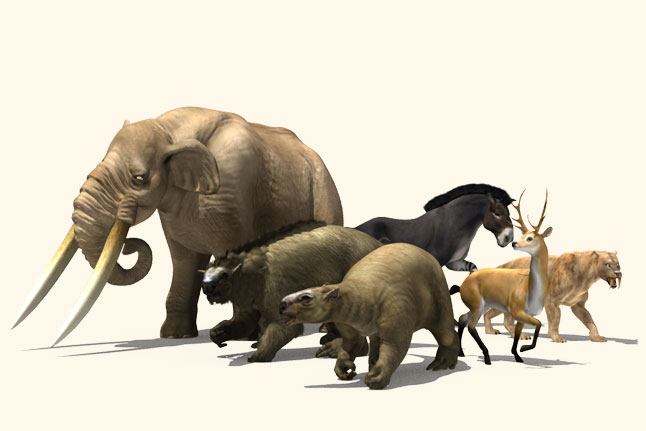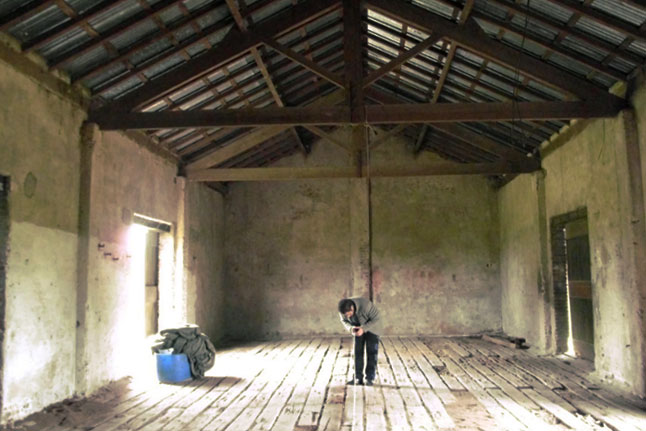The discovery made at Arroyo del Vizcaíno, in Canelones, Uruguay, depicts the long-gone giant mammals as they were and, in addition, offers unexpected evidence of human presence far earlier than had been accepted.
30,000 BC: Megafauna alive
Nearly 30,000 years ago, what today are fields close to the city of Sauce were home to several species of giant mammals. Our autochthonous fauna was composed by huge mammals, besides the small ones that live nowadays. Some of those giants, like the ground sloths of the genus Lestodon, were very abundant. Others, like the toxodonts, were more scarce. In any case, all those species might have gathered to drink in the streams and ponds, while the sabretooth watched them choosing its next prey.

1997: The finding
During the severe drought that southern Uruguay underwent in 1997, many water courses went dry, especially the smaller ones, to much worry of local farmers that use their waters to irrigate their crops. One of those streams, located near the city of Sauce, left exposed a treasure consisting of remains of the South American Pleistocene megafauna (glyptodontes and the giant sloth Lestodon). The students of Sauce highschool, their teachers and neighbours extracted part of that material, about 300 fossils, before the rain made the stream go back to its usual level.

2001: A marked clavicle
The original colectors had seen them in 1997, but when visitin Uruguay the Spanish palaeontologist Alfonso Arribas, from the Instituto Geominero in Madrid, observed that one of the remains, a clavicle of the sloth Lestodon, showed very interesting marks that might have been made by humans. Examined under microscope, they were observed to have features similar to those left by stone tools. Besides, they were predominantly located in zones of muscle insertions and with two main directions, nearly perpendicular to each other. From this, the first preliminary research led to a publication in a European journal. More information on the marks. More information on the marks.

2007: Old radiocarbon date
The first chronology of the site is published , with radiocarbon datings obtained in a US major laboratory from samples of a rib of Lestodon and the very marked clavicle just mentioned. The age yielded by this analysis is surprisingly high: nearly 30,000 years before present.

2011: Digging
Mud party for the palaeontologists. After damming the pond and pumping the water out to expose the fossils (and after rescuing the fish and other faunal species trapped), the sediment was removed to expose the most superficial bones. A grid was build up to take carefully referenced pictures. In this first stage about 200 elements were extracted, particularly those that would have been left vulnerable to damage. After the collection, geocloth was used to cover the sediment and protect the fossils. Waters were left to go back to their original level and so we concluded the first professional excavation of the site.

2011: Project on a Museum of Megafauna
The society of Sauce is enthusiastic since 1997 to have a museum in the city to preserve and exhibit the found patrimony and also to be a centre of cultural activity. The creation of this institution has been included in the budget of the local parliament (Junta Departamental de Canelones). A short term agreement is current between the local government (Intendencia Departamental de Canelones) and the Facultad de Ciencias of the Universidad de la República, its activities being the preparation of the material and the making of a detailed catalogue. The old train station could be the venue for this museum.

2012: Digging again
Taking advantage of the fact that the summer of 2012 is rather dry, we went back to the place.
